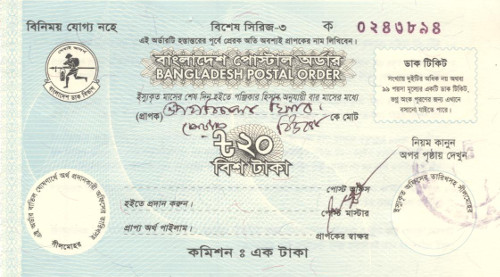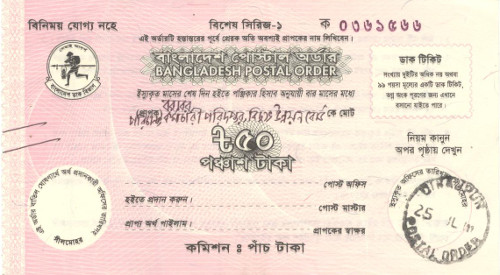The Post Office of Bangladesh sells Postal Orders, an item many Westerners do not know about, nor understand. Postal orders are not the same as money orders. In Bangladesh money orders are also sold at the post offices as they are in the United States. There is no actual paper money order as we are accustomed to buying. The money is electronically transferred from the sending post office to the receiving post office.
What strikes you first when seeing postal orders is the low denominations. The reason for such is that they are used for paying small fees, such as postage. An example would be if a government agency posted a job vacancy, one would have to send a postal order to the agency for them to send you an application. It was to cover the mailing cost of the application from the agency to the person requesting it.
Since the postal orders are all in full denominations (1, 5, 50, etc.), if the fee was Tk.2.50, the additional 50 poisha was paid by purchasing the equivalent in postage stamps and affixing them to the postal order in the upper right corner of the front, of a Tk.2 postal order.
There was a small fee for purchasing the postal order but the cost is printed in Bangla script in the upper left. The fee was the cost of obtaining a postal order, in addition to the cost of the postal order and any additional stamps needed.
Postal orders are non-negotiable and cannot be cashed by anyone other than to whom they are sent.
Also note that it is possible to find them not used, and not cashed, even though they were sent.
Below are four different designs that were used. There most likely are additional designs and denominations not yet illustrated. Although many of them have cancelations on them, they are almost always blurred or not completely whole and it is difficult to determine the years they were used.
More information will be added to this section as it becomes available.
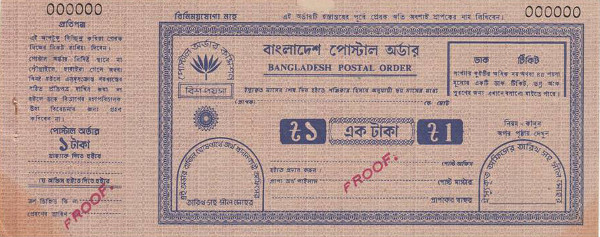

YEAR (?)
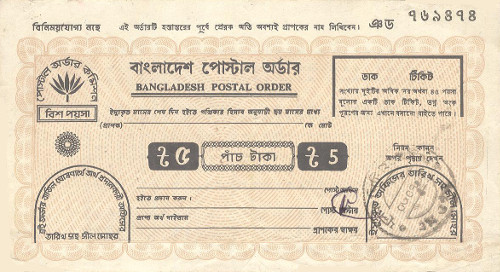
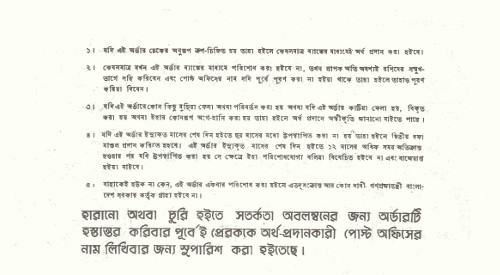
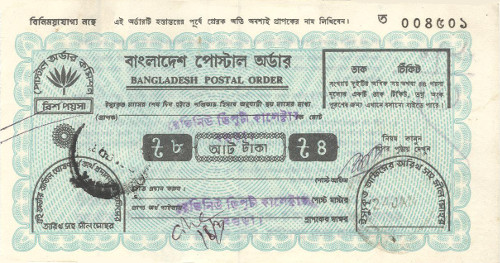
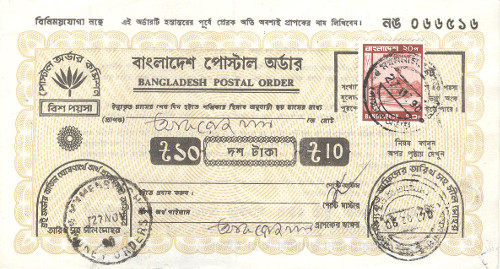
YEAR (?)

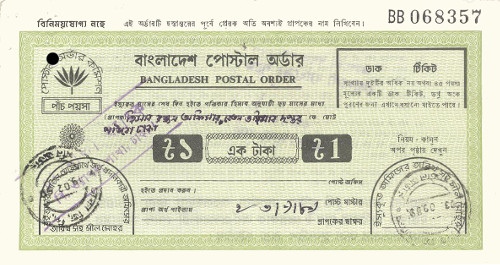
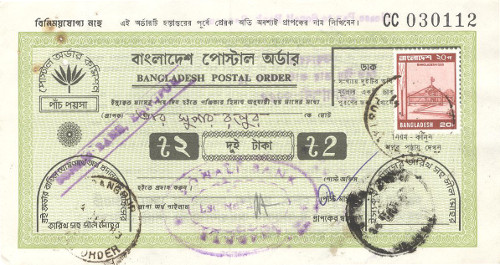

YEAR (?)
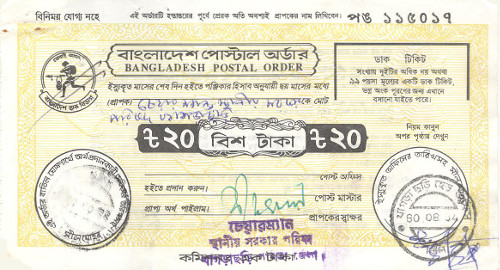
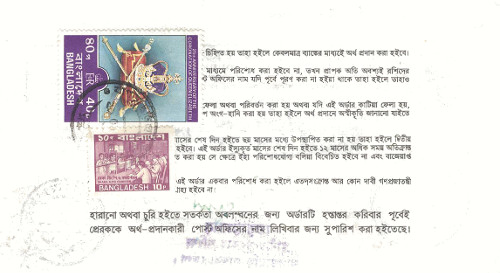
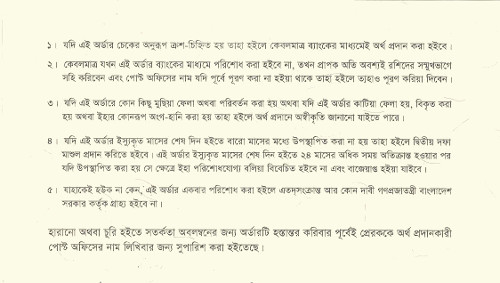
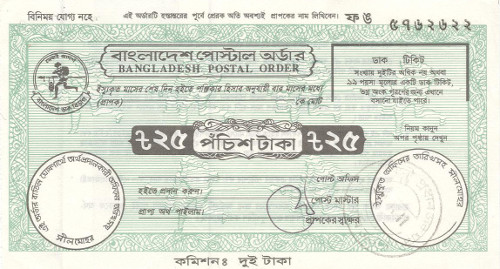
YEAR (?)
